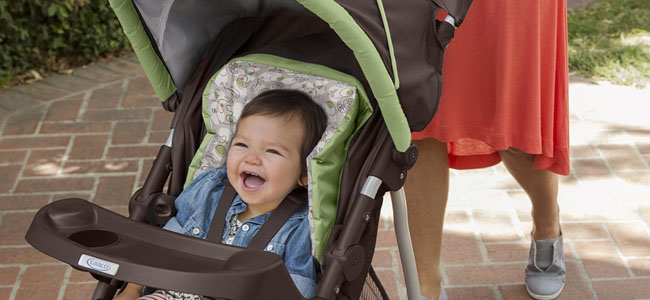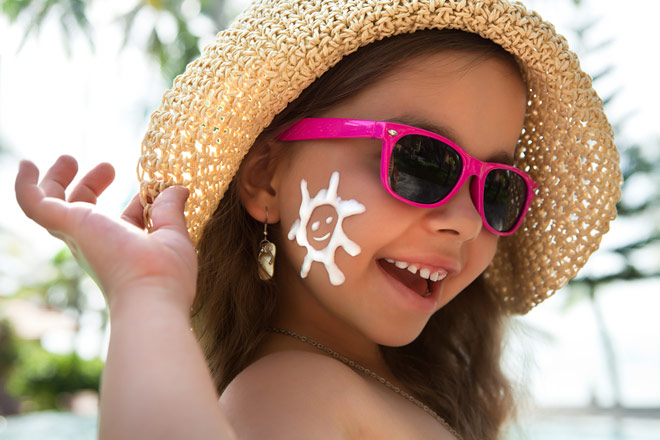
UV radiation is the most preventable risk factor for all types of skin cancer, including melanoma, the deadliest form of skin cancer. Unprotected UV exposure can cause sunburn, and sun damage in childhood can lead to skin cancer and early skin aging later in life, so it’s important for parents to protect their children from the sun’s harmful rays, Dr. Nouri MD, FAAD, chief of dermatology services, says.
The American Academy of Dermatology recommends:
- Keep infants younger than 6 months out of the sun as much as possible. Keeping babies in the shade is the best way to shield them from the sun; parents also can protect their children by dressing them in long-sleeved shirts, pants, wide-brimmed hats and sunglasses.
- Sunscreen use should be avoided if possible in children younger than 6 months. Parents of infants and toddlers 6 months and older may apply a broad-spectrum, water-resistant sunscreen with an SPF of at least 30 to their children’s exposed skin; sunscreens containing zinc oxide or titanium dioxide
Research Findings
While 83 percent of the parents surveyed said they routinely seek shade for their babies, only 43 percent reported routinely using a hat to shield their children from the sun, and only 40 percent reported routinely dressing their children in long sleeves and pants for sun protection. Twenty-nine percent said they have routinely used sunscreen on children younger than 6 months, even though other methods of sun protection are recommended for this age group. Additionally, one-third of survey respondents reported that they routinely attempted to allow their infant to “develop tolerance to the sun’s rays” by gradually increasing their sun exposure. Three percent of survey respondents reported that their children had received a sunburn during their first six months of life, while 12 percent reported that their children had tanned during that same period. “Some parents may think they’re helping their children by exposing them to the sun, but actually, the opposite is true,” Dr. Nouri says. “Unprotected sun exposure can damage the skin and lead to skin cancer.”
The majority of parents who participated in the survey were Hispanic or African-American, so this research provides particular insight into the sun protection habits of these populations, Dr. Nouri says. People of color may think they don’t need sun protection, he says, but that is not the case. “Anyone can get skin cancer, so everyone should take steps to protect themselves and their children from the sun’s harmful rays,” Dr. Nouri says. “Parents of all skin colors should set a good example by practicing sun protection and instill good habits in their children from an early age.”

When taking your newborn baby (under 6 months of age) outdoors:
- Stay indoors between 10 am and 2 pm, the hottest part of the day
- A hat with a brim is a must
- Loose clothing can help protect the rest of your baby’s skin
- Sit under shade or an umbrella, or create your own, with an awning or a light blanket
- Window film: Window film blocks up to 99% of UV rays and reflect more than 78% of the sun’s heat.
- Car window shades: These are also known as roller shades or sun shades.
- Stroller sun shade: Check with the manufacturer of your stroller for available sun shade options. Some versions also are available with mosquito netting.
- In case of need, always use a sunscreen specially developed for babies.
Older Babies
Older babies (and children) should avoid exposure to direct sun for any extended period. They should always wear protective clothing and sunglasses. Check with your pediatrician about using a broad-spectrum sunscreen (with UVA and UVB protection and an SPF of at least 30) that’s formulated just for babies.
As your child grows and matures far past babyhood, continue to ensure that his skin is carefully protected from the sun. By establishing healthy habits e.g. using hats & sunglasses, you can provide nurturing care for your baby now, and for years to come.
Sun protection is important at every stage of life, and that includes infancy.
Ref: